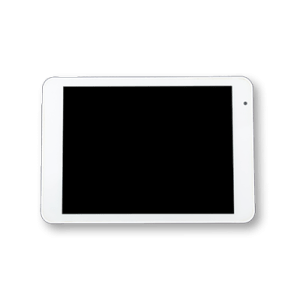Spot the waste
Search the pictures and have fun learning how to use only what you need.

Overview
What do we ‘need’ to live and be healthy and what do we ‘want’? Too many ‘wants’ can waste our resources, water and energy. Using our powers of observation let’s spot the ‘wants’ and all the stuff that is wasting our resources, water and energy.
Instructions
What you'll need
- "Waste less" slideshow
- "Waste less pictures" handout. Cut each handout into 12 pictures, 1 set of pictures per group and plan for 3 to 4 students per group
- Digital projector and screen
1. Pull up the “Waste less” slideshow. At slide 2 ask the students to choose which of the images they need to survive. Slide 3 shows three of our basic needs. Share with the students that we also need air, clothing, love and acceptance, safety and education.
2. Slide 4 and 5 shows some of our wants. Share with the students that when we have lots of wants we create lots of waste.
3. At slide 6 explain to the students that we use resources including water and energy to make anything like food, or toys or clothes. Examples of resources would be trees, plastic, metal. To make this truck we use trees and water and energy to cut down the trees and make the truck.
4. At slide 7 and 8, share that if we want lots of toys like trucks we are using a lot of resources, water and energy, which is a waste. Can we buy and use less?
5. At slide 9-11, ask the students to spot the wasteful things happening in the pictures. Have the students count them. Ask the students to share alternate things they can do to be less wasteful.
6. On slide 9, there are lots of toys in the cupboard, a half eaten sandwich on a plate, and lots of clothes on the floor. Solutions could be:
- Less toys, share toys
- Don't waste food, so save it for later if you are no longer hungry
- Fewer clothes, when you grow out of your clothes give them to a younger sibling or friend
7. On slide 10, the tap is on while child is brushing their teeth, someone is taking a very long shower, there is a tap dripping in the kitchen, and someone is washing the car using a hose. Solutions could be:
- Turn off the tap when brushing your teeth or soaping hands
- Take shorter showers (5 minutes or less)
- Turn of the dripping tap, or ask an adult to fix it
- Use a bucket of water and sponge to wash the car
8. On slide 11, the fireplace is on, the window is open, all the lights are on, TV is on, radio is on, child is sitting with headphones on playing video games on phone, and the fridge is open. Solutions could be:
- Turn down the heat
- Close the windows when it’s cold out
- Turn off some lights
- Turn off devices not in use
- Read a book, draw, do a puzzle, play a board game instead of video games
- Close the fridge
9. At the end of slide 11, pause the slideshow and put the students into small groups of 4-5 students. Provide each group with a set of the "Waste less pictures". Ask the students to sort the pictures into 2 groups, one that is wasteful and one that uses less.
10. Once the students have finished sorting the pictures show slides 12-24 with the answers. At the last slide, ask the students to share what else they can do to reduce their waste and use less.
Modify or extend this activity
Find the activity, "DIY reusable snack bag", to continue the learning about reducing waste. Students make a reusable snack bag to bring their snacks to school.
Curriculum Fit
Kindergarten Social Studies
Content
- Needs and wants of individuals and families
Curricular competencies
- Use Social Studies inquiry processes and skills to ask questions; gather, interpret, and analyze ideas; and communicate findings and decisions
Kindergarten Science
Content
- Basic needs of plants and animals
Curricular competencies
Applying and innovating
- Take part in caring for self, family, classroom and school through personal approaches
Assessments
- Assess students’ group participation and cooperation working with others.
- Assess students’ ability to choose things that use less: resources, water and energy.
- Assess students’ understanding of why we want to create less waste.
Teaching Notes
Needless waste
All living things have basic needs like air, water, food, clothing, shelter, love and acceptance, safety and education. However, its important to understand that needs are different from wants. Many things we want in our lives are not needs but luxuries and the impact of ‘many wants’ is significant. Having less in our lives is beneficial in many ways:
- We waste less such as resources, energy, and water that are needed to make our luxuries. Saving resources, energy and water means fewer burdens on our planet
- We can share the resources, energy and water with others on our planet
- We can create lending libraries like tools, and equipment so we can own less, have access to more and build community
- We have less clutter which makes us focus on the things that matter like spending time with family and friends
- Our space is quicker and easier to tidy up
- We can find things easier
- We save money which can be used to do fun things with family and friends
- Send less stuff to landfill which takes up space and/or recycling, which uses a lot of energy and water







